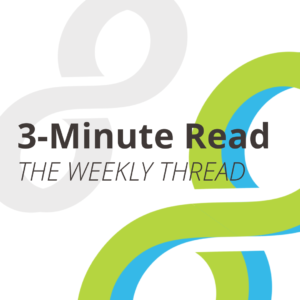Company R&D Investment: How Data Insights Can Fuel U-I Collaborations
Oct. 24, 2023 —Despite pandemic shutdowns and resulting economic stagnation, the Business Enterprise Research and Development (BERD) survey from the National Science Foundation shows that business R&D performance topped $600 billion in 2021. Coupled with the Higher Education Research and Development (HERD) survey released late last year that showed universities’ most significant growth in federal funding since 2011, it seems research and development expenditures are rising across the board. But what does that mean for U-I collaborations, and how can we use investment data to support cross-sector partnerships?
—Despite pandemic shutdowns and resulting economic stagnation, the Business Enterprise Research and Development (BERD) survey from the National Science Foundation shows that business R&D performance topped $600 billion in 2021. Coupled with the Higher Education Research and Development (HERD) survey released late last year that showed universities’ most significant growth in federal funding since 2011, it seems research and development expenditures are rising across the board. But what does that mean for U-I collaborations, and how can we use investment data to support cross-sector partnerships?
R&D investment data
Funding is a key indicator of health in the research landscape, and the funding levels reported in the BERD and HERD surveys have profound implications for university-industry research collaborations. For over 50 years, the percentage of R&D funding from businesses to universities has been between 5-7%. The BERD survey for 2021 shows a 12% increase in R&D expenditures from 2020 to 2021, from $528 billion in 2020 to $602 billion. The lion’s share of the total increase ($63 billion of the $65 billion) came from companies; of the remainder, the federal government paid a little over 30%. The BERD survey also found that of the $602 billion spent on R&D, 79% was spent on development, 14% on applied research, and 7% on basic research. In comparison, data from the HERD survey showed R&D spending at academic institutions totaling $89.9 billion in 2021, an increase of 4% over 2020. Expenditures in health sciences and biological and biomedical science accounted for 78% of the total growth in 2021. In the coming years, there may be changes in U.S. federal funding levels as government spending will move away from pandemic levels and more adequately address budget deficits.
How does the U.S. compare to other nations? Internationally, the European Union publishes the EU R&D Scoreboard, offering information on R&D investment to compare the performance of EU-based companies against global counterparts. The most recent scoreboard was released late last year and includes data for 2021, the same period as the BERD and HERD survey data. The scoreboard indicates that companies in the EU increased their R&D investment by 8.9% in 2021, with four sectors accounting for nearly 78% of the total scoreboard R&D: information and communications (ICT) technology producers, health industries, ICT services, and automotive industries. The scoreboard found that EU companies lead in investment in the automotive industry, although the United States leads in ICT products and services and health R&D, with China second in ICT producers and services.
What it means
This data indicates significant trends in R&D investment across academia and business sectors. Increased research investment means more R&D activity, ultimately leading to more collaboration opportunities. As universities advance research portfolios and capabilities and businesses look for new research investments, more opportunities emerge for new partnerships to take root.
We can also see the research areas receiving the most investment, which helps to identify trending priorities and informs decisions about future research directions. In the same vein, understanding research investment, especially in businesses, can help align R&D with market demand for new technologies. For example, BERD data shows increased investment in applied research, with the most investment coming from pharmaceuticals and medicine, computer and electronic products, and information and software development industries. Of course, increased investment also means more research, more discoveries, and more solutions to global challenges.
Why it matters
Keeping a finger on the pulse of research investment worldwide is instructive, both for planning future research directions and keeping abreast of R&D investment trends. Expenditures serve as a compass for U-I professionals, highlighting areas of burgeoning innovation and potential opportunities for cross-sector collaborations. With R&D expenditures rising worldwide, cross-sector partnerships will also advance, eventually resulting in innovations and discoveries that benefit us all.
We want to hear from you. Have you utilized HERD, BERD, or EU R&D Investment Scoreboard data in your collaborations? Let us know on our LinkedIn profile.


